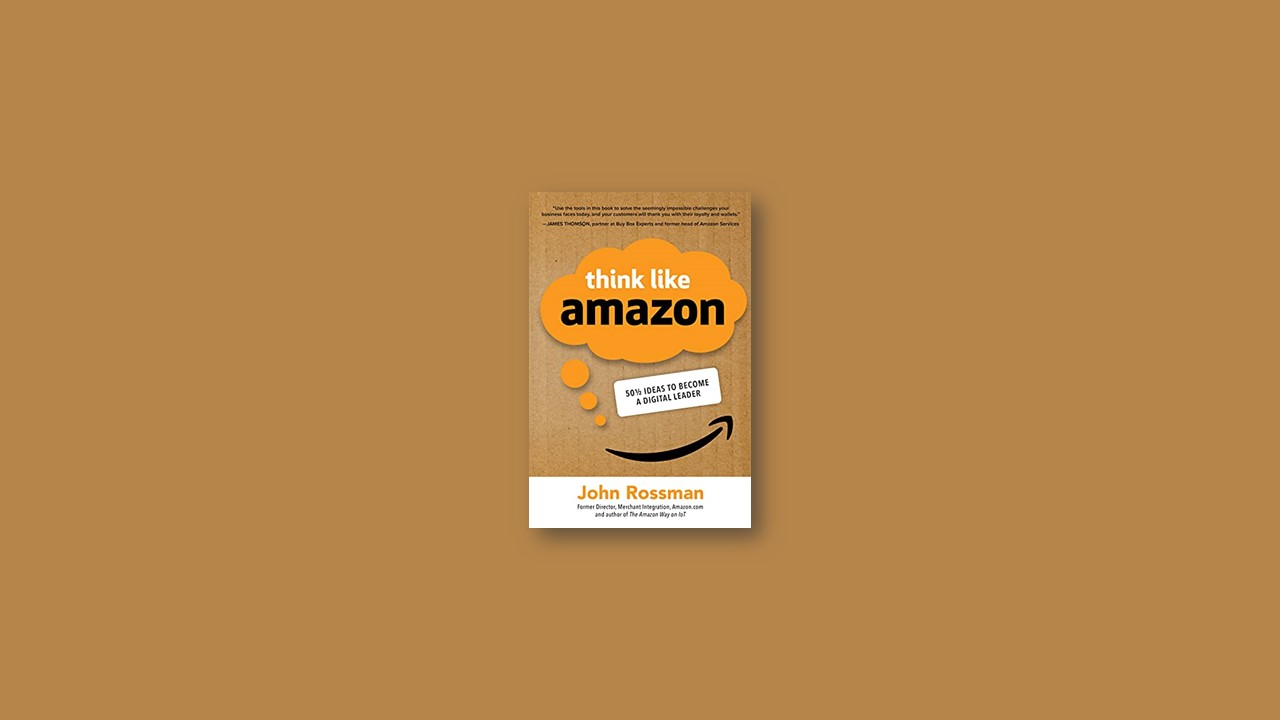idea 1 Reset Your Clocks: Your Journey Will Not Be Short or a Straight Line
idea 1: If you can strategize and evaluate your plans over a long period of time, you will be able to make investments and “bets” that other businesses cannot. Identify the long-term risks and constraints in your business. You might be able to find strategic leverage by addressing them early
idea 2 Mercenary or Mission Driven? Be Strategic and Honest in Your Obsession, and Then Obsess to Win
idea 2: You will stick through the hard times if you are passionate about the cause and the customer. Consistent messaging regarding the mission will take the “mildly interested” majority of employees in most organizations and make them fanatics for your business, for winning, and for the mission.
idea 3 Move Forward to Get Back to Day 1: Change the Culture of the Status Quo
idea 3: If your business has become stagnant or is at risk of commoditization or standing still, admit the situation, change the questions you are asking, and be purposeful in your communication.
idea 4 Obsessed is Different: Create Customer Obsession in Your Business
idea 4: It’s everyone’s job to know and have empathy and passion for the customer. Make sure everyone knows it’s their job. Find many ways to deliberately practice and build this expectation. Dive deep into the issues experienced by customers (or other key stakeholders), and don’t delegate figuring out the root causes. Know the details of the customer experience and what causes friction for customers.
idea 5 Don’t Go Along to Get Along: The Risk Social Cohesion Poses to Achieving Hard Results
idea 5: Make being right the most important thing. Set the tone from the top that we will win by doing the right thing, having honest conversations leading with customer obsession and data, seeking perfection through data, and ignoring job titles, while still treating each other with respect. Many of the ideas in this book will help reinforce this principle.
idea 6 Deliver Results: Own Your Dependencies to Overcome and Succeed
idea 6: Set the expectation that leaders cannot point the finger at others if they don’t achieve the right results. Demonstrate how to better manage dependencies so they can better deliver outstanding results in distributed organizations.
idea 7 Ownership for Everyone: Compensation Strategy to Drive Enterprise Optimization
idea 7: Craft a compensation structure incenting long-term enterprise value creation. Communicate the strategy and value of your compensation structure often to build alignment. When dramatic shifts are needed in a business, dramatic shifts in compensation structure become necessary.
idea 8 Avoid Country Clubs: Stay Hungry Even When You’re Successful
idea 8: Companies that have had success and that have benefited from a rise in equity appreciation are at risk of playing it safe. Find ways to keep tension in the wire for growth, innovation, and long-term enterprise goals.
idea 9 Make the Elephant Dance: Portfolio Strategy and Governance for Innovation
idea 9: Innovating requires a different investment and governance mindset than what most companies typically have. If you define, manage, staff, and evaluate innovation investments the same way you do less risky investments, the system will not lead to the outcomes you’ve intended. You need a different governance framework.
idea 10 You are the Chief Product Officer: The New Management Science of Being a Builder
idea 10: Leaders who can design product, define architectures, and deeply understand and articulate what exactly needs to be delivered are powerful in a digital enterprise. This is a change from the traditional approach of overseeing and staying out of the details. You need to have the skills, the interest, and the insights into where to dive deep, and you need to be the designer.
idea 11 Are You Willing to Be Misunderstood? Lessons from Amazon’s Biggest Innovations
idea 11: The most impactful and underappreciated aspect of innovation is challenging common and long-held assumptions about how things work. When you create an alternative to these assumptions, expect many doubters.
business model innovations. They are not really that technical. What they also have in common is the fact that incumbents and industry pundits woefully underestimated their impact on the industry and the bottom line.
idea 12 Get to Yes: Finance, Tax, Legal, and HR Teams That Matter
idea 12: It is everyone’s job to figure out how to get to yes. Traditional support capabilities need to understand that they are in the business of helping their internal clients get to yes. Spend more time understanding the real objectives, and more options will become available.
idea 13 Blow Up the Org Chart: Don’t Let Your Organizational Structure and Titles Get in the Way
idea 13: Organizational charts, titles, and job descriptions serve important purposes. Use them to do the right thing. Don’t let them get in the way of doing the right thing. Set up strategies to counterbalance organizational structures.
No matter how carefully you design the organizational chart, no matter how often you do a reorganization (hopefully not annually), and no matter how much job design expertise you bring to the table, you are—at best—organized for predictable situations and today’s business. When things go sideways or when a change initiative is underway, you are at high risk of a cross-functional, bureaucratic chokehold.
idea 14 Games for Innovation: Spur Invention in Fun Ways
idea 14: Patent is just a word for “a great idea that adds value.” For most organizations and teams, pursuing patents is not core to strategy or realistic, but creating incentives for coming up with “great ideas that add value” is. Find fun but consistent ways to incent and recognize innovating.
idea 15 The Door Desk: Forcing Innovation Through Frugality
idea 15: Savings are more than a competitive matter. Frugal does not mean cheap. Embrace thrift to build a culture of efficiency and innovation. Designing to constraints, such as cost, helps to reframe the situation and drive innovation.
idea 16 Introduction to Mission Impossible: Being Digital
Idea 16: Being digital is about changing and improving not just the organization but also yourself. Being digital is about speed and agility, not just for your customer but in how you get work done and collaborate as an organization. To drive permanent and lasting change, be deliberate in the different habits your direct team starts to practice as part of this mission.
idea 17 Experiment, Fail, Rinse, Repeat: Plan and Operate Your Experiments for Digital Success
idea 17: Digital success depends on moving quickly and measuring the impact of changes through tests. It depends on identifying the right type of failure versus the wrong type of failure and carefully deciding how to define a test and evaluation. Senior leaders need to be personally involved in defining the test and reviewing results and implications.
idea 18 So You Want to Be a Platform? Platform Strategy for the Rest of Us
idea 18: Thinking about how your core capabilities could be offered as a platform might help you identify a future business strategy. It’s not for everyone. Regardless, deeply understanding what it would take will give you great ideas for improvement and innovation.
idea 19 Yes, You are A Technology Company Decentralize Your Way to Digital Greatness
idea 19: Centralized IT serves one set of purposes for an enterprise. As more connected experiences are integrated into your products and services and more technology-enabled innovation is needed throughout, put technology resources closer to customers, and embed these into the business, where they are part of the team and product.
idea 20 Pizza for All! The Magic of Small Autonomous Teams
idea 20: Organize the digitization of core capabilities and services to be owned by small teams. This team will engineer, build, and operate a capability valued by both internal and external customers. Creating small teams results in more innovation, higher-quality work, and a stronger culture.


